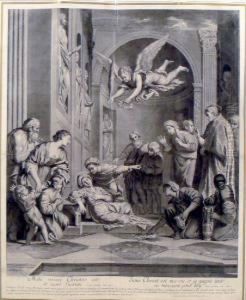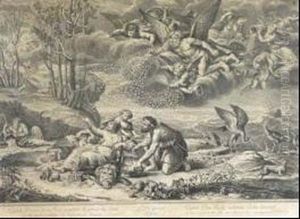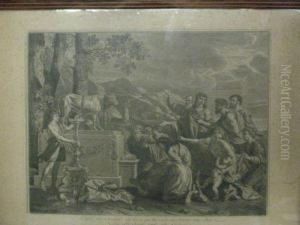Jean-Baptiste Poilly Paintings
Jean-Baptiste Poilly was a French engraver, draughtsman, and print dealer born in Abbeville on March 1, 1669. He was part of a family of artists and engravers; his father, François Poilly, was a minor painter, and his younger brother, Alexis Poilly, also pursued a career in engraving. Jean-Baptiste's style was heavily influenced by the works of the Italian masters and the French classical style that was prevalent during his lifetime.
Poilly moved to Paris to advance his career and became a student of the renowned engraver Gérard Audran. Under Audran's guidance, he honed his skills and became proficient in the art of engraving. Poilly's works were mainly reproductive engravings of paintings by contemporary and earlier masters. He was known for his precision and ability to capture the essence of the original paintings in his engravings, which were highly valued for their clarity and attention to detail.
In 1695, he was received into the French Royal Academy of Painting and Sculpture, which marked a significant achievement in his career. His admission piece was an engraving of a work by Charles Le Brun, the preeminent French artist of the time. Poilly's reputation continued to grow, and he became one of the leading engravers of his day. He often collaborated with other artists and print dealers to distribute his engravings, which contributed to his financial success and widespread recognition.
Throughout his career, Jean-Baptiste Poilly produced a vast number of engravings, many of which were portraits and religious subjects. His works were sought after not only in France but also across Europe, and they played a role in disseminating the styles and artistic ideas of the French Baroque period.
Jean-Baptiste Poilly passed away on April 2, 1728, in Paris. His legacy lived on through his numerous engravings and the influence he had on the artists of his time. His works continue to be studied and appreciated by art historians and enthusiasts for their contribution to the art of engraving and the dissemination of French art during the Baroque era.


